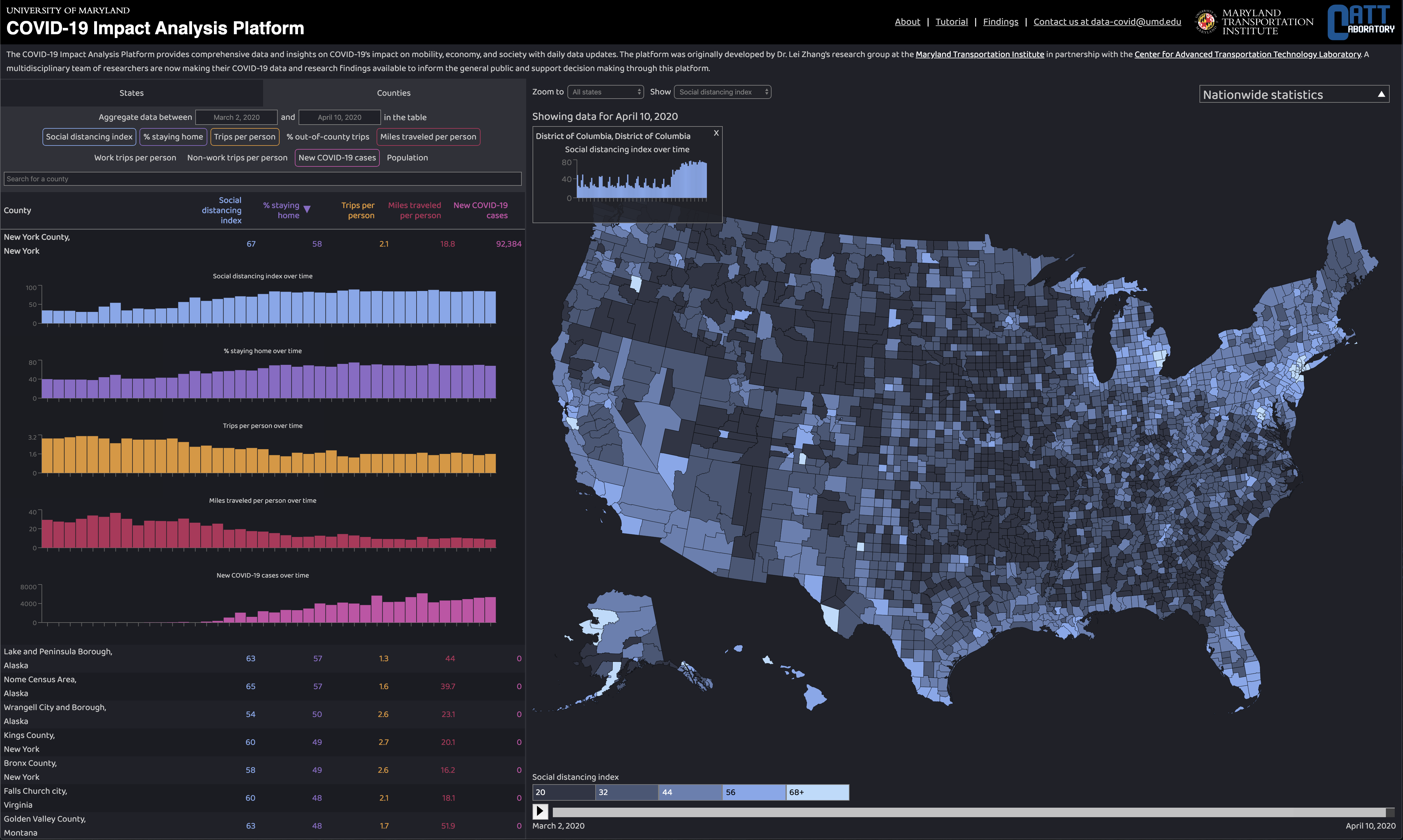
Shelter-in-place Compliance Remains Low, UMD Research Finds
From Univ of Maryland, April 13, 2020
LINK: County by County Hawaii Data
Many Americans are still not following physical distancing guidelines issued by state and federal authorities that are designed to slow the spread of the novel coronavirus disease (COVID-19). The percentage of people staying home nationwide increased from 20% to 35% at the onset of COVID-19 in mid-March but then stagnated at 35% for three weeks, despite skyrocketing new COVID-19 cases. Erratic compliance is just one of the trends registered by a new interactive analytics platform developed by researchers at the University of Maryland’s A. James Clark School of Engineering that measures the impact of COVID-19 on mobility, health, the economy, and society.
The UMD researchers are making their data and findings, which are updated daily, available to the public in order to help public officials make informed decisions. The first phase of the project focused on how physical distancing measures are affecting mobility behavior, spread of COVID-19, and local economies.
“Our goal is to not only produce new and compelling data, but to truly inform and support decision-makers with the best available data and interactive analysis tools,” said Maryland Transportation Institute (MTI) Director and Herbert Rabin Distinguished Professor Lei Zhang, who leads the project. “Government agencies need to improve the effectiveness of physical distancing and stay-at-home orders by educating the general public, increasing enforcement, working with employers and communities, and supporting vulnerable populations who may encounter challenges in meeting social distancing requirements.”
Government stay-at-home orders have had a positive, but limited, impact on mobility behavior, the platform shows. The highest increase in the percentage of people staying at home during the week after a statewide order, in comparison to the week before the order, belongs to New Jersey (13%), followed by New York (11%), Illinois (11%), California (11%), and Michigan (10%). Government orders had virtually no impact on the percentage of people staying home in Kentucky, Maine, South Carolina, Pennsylvania, and Missouri. On average, a government order has resulted in just a 4.3% change in mobility behavior.
The District of Columbia and New York state have the highest percentage of people who are staying at home in the nation, but that percentage has stagnated around 54% for the District of Columbia and 49% for New York for weeks, even after shelter-in-place restrictions were imposed, the UMD platform shows. The total number of trips per person has dropped by 22% nationwide. Among all the trips still being taken, however, fewer than 14% are trips to and from work. The majority of the trips taken are still for non-work purposes. Meanwhile, inter-county and out-of-town trips still comprise a significant portion of all trips, at 25% nationwide.
“Our goal is to not only produce new and compelling data, but to truly inform and support decision-makers with the best available data and interactive analysis tools,” —Dr. Lei Zhang, MTI Director and Herbert Rabin Professor
“Government advisories and stay-at-home orders have reduced trip distance across the nation and in some states the percentage of people staying home and trip rates too. However, they have not fully accomplished the expected change in mobility behavior, according to our data analysis,” Zhang said. “Those who are able to adopt social distancing practices already did so before government intervention. Those who cannot or do not want to stay at home show significant behavior inertia and render government stay-at-home orders much less effective than expected.
Using anonymized and aggregated location data from mobile devices and other sources, the new impact analysis platform provides daily updates, going back to January 1, 2020, on variables that include a social distancing index, percentage of people staying at home, visits to work and non-work locations, out-of-county trips, trip distance, and relationship between mobility behavior and COVID-19 cases. The results are aggregated and scaled to the entire population of each county and state.
Center for Advanced Transportation Technology (CATT) Laboratory Director Michael Pack is the project co-lead. “This is just phase one of our analysis,” Pack said. “We plan on rolling out new statistics, correlated data, information visualizations, and other tools to the platform daily to enable more insights and discoveries.”
The mobility metrics are being paired with healthcare data, sociodemographic data, unemployment numbers, and business establishment data, building a richer set of metrics that aid in understanding how COVID-19 is affecting our society and how to design and implement policies on social distancing, economic stimulus, and protecting vulnerable populations.
“COVID-19 is a complex challenge with broad-ranging impact,” said Clark School Professor Darryll J. Pines, who will become president of the university in July after 11 years as dean of the Clark School. “One of our strengths at UMD is our ability to bring together knowledge from varied disciplines—in this case, transportation engineering, public health, data analytics, and economics—to address problems that are complex by nature.”
The platform can be accessed at https://data.covid.umd.edu. For more information, contact the project team at data-covid@umd.edu. MTI and CATT Lab are both affiliated with the Department of Civil and Environmental Engineering in the A. James Clark School of Engineering at UMD. The UMD team benefits from collaboration with various data providers, including a COVID-19 International Data Collaborative led by Cuebiq and cloud computing support from Amazon.